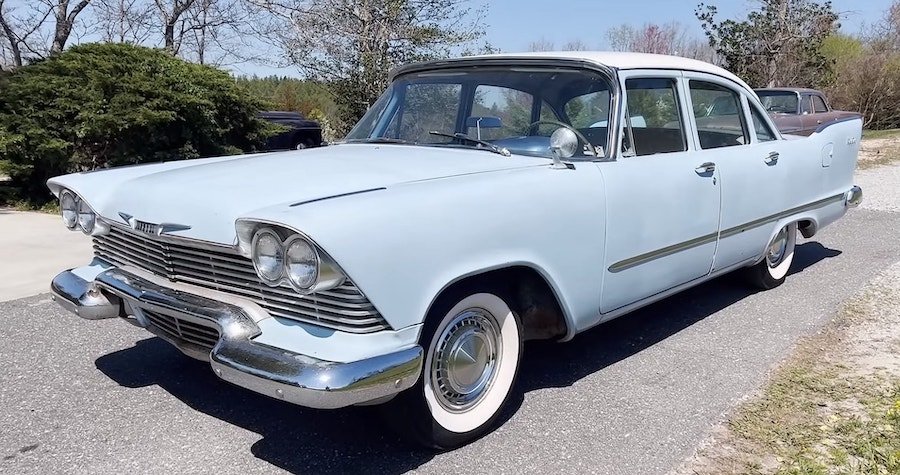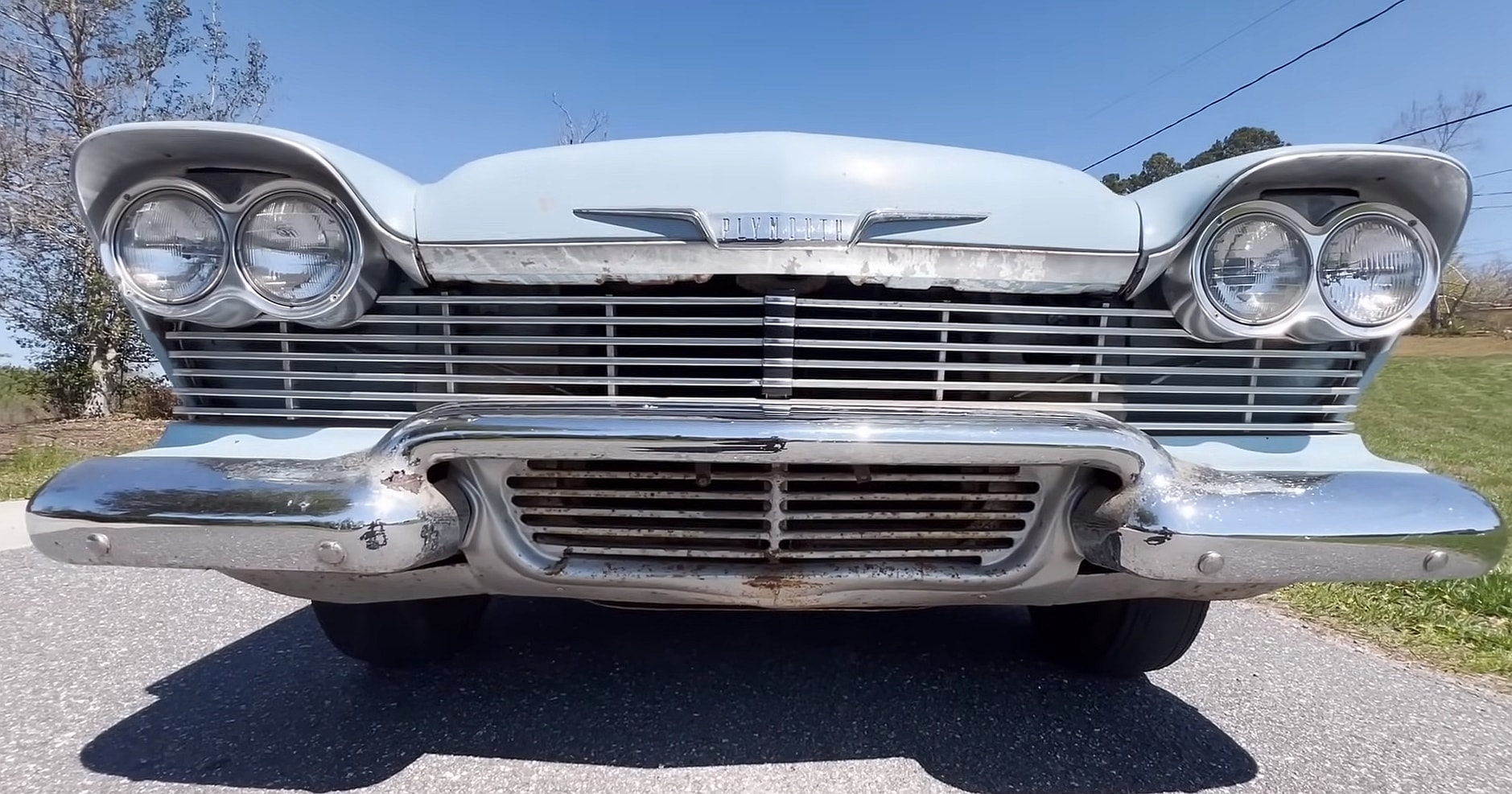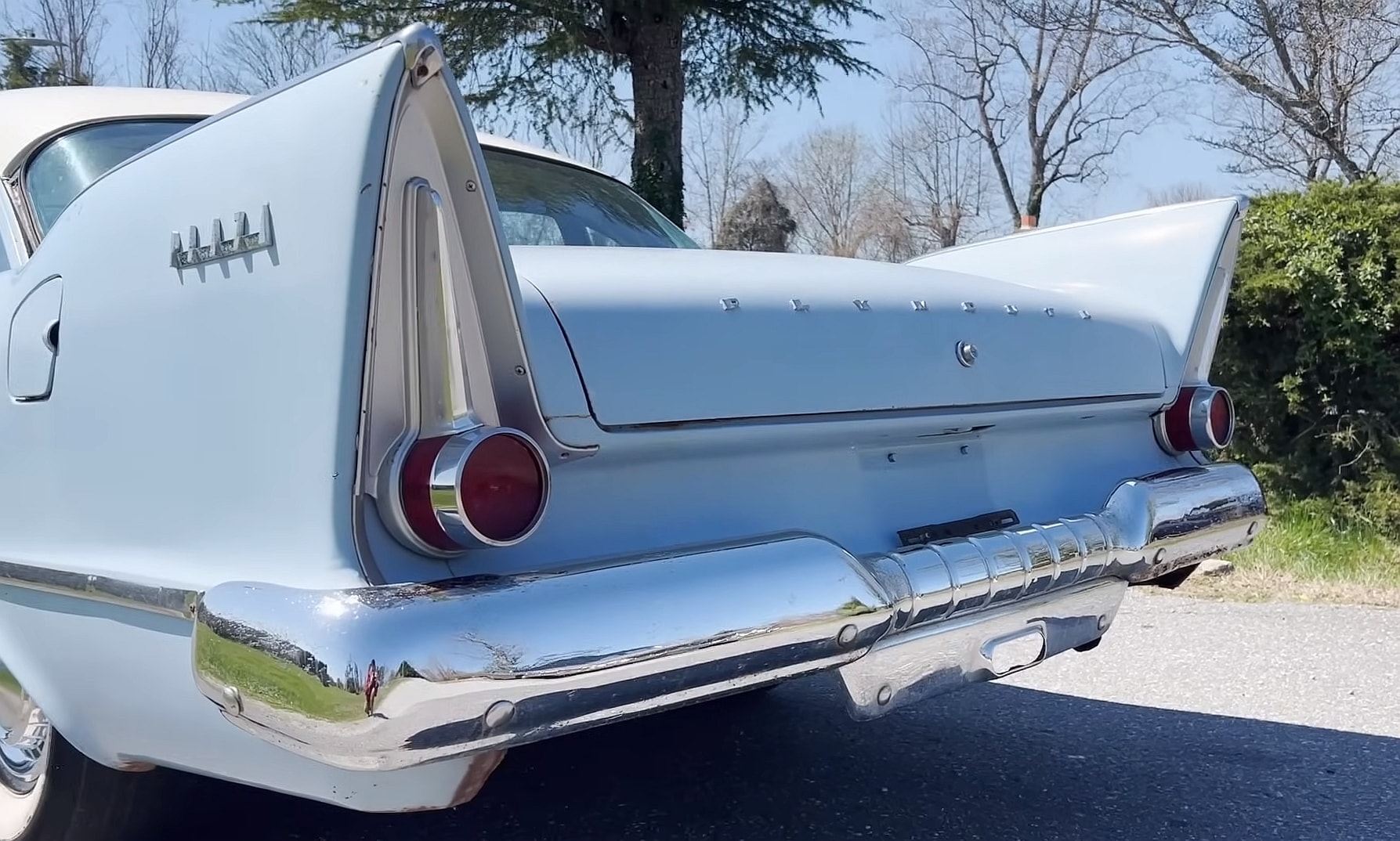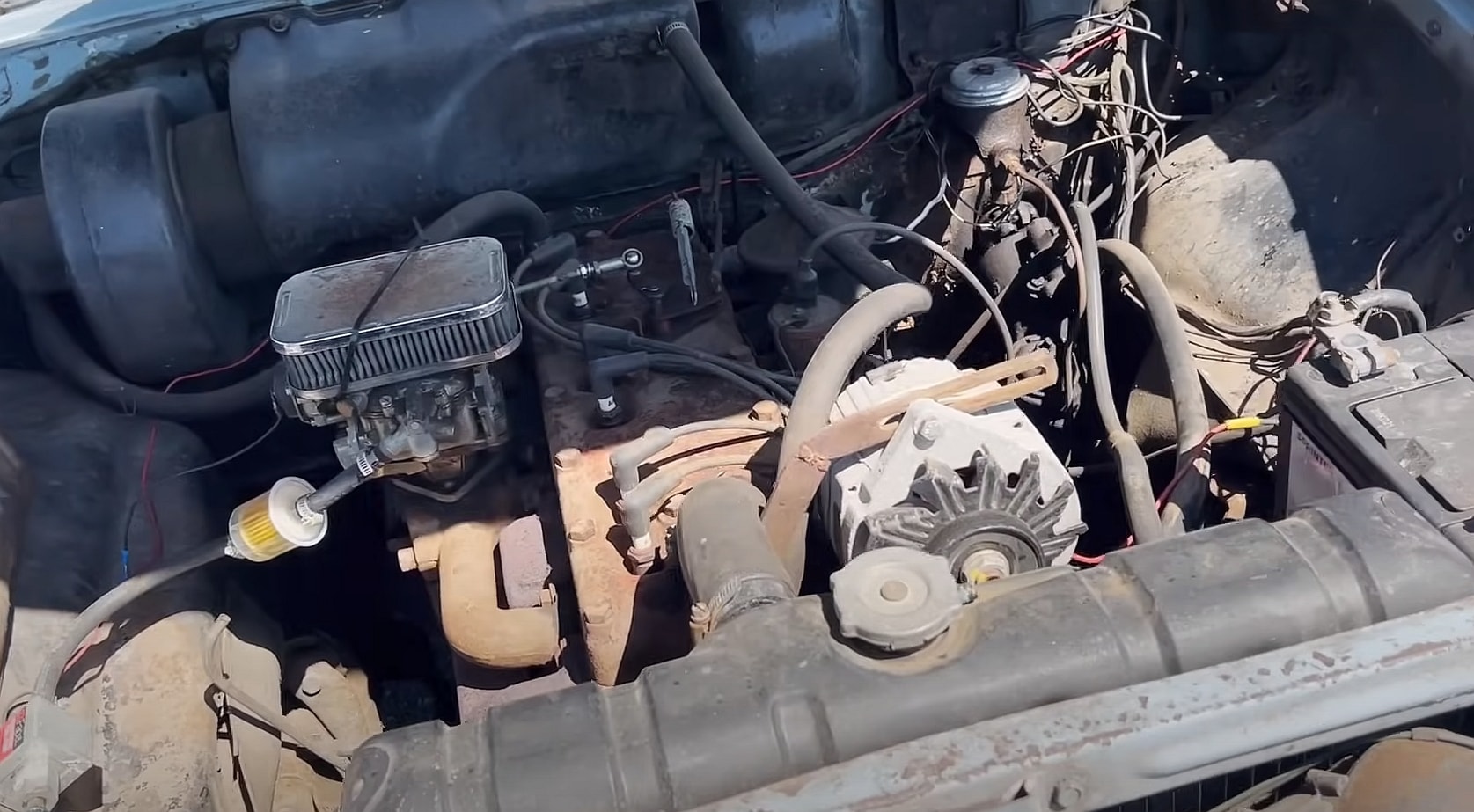Unrestored 1958 Plymouth Plaza Flexes Rare Options Combo, Runs Like a Champ

Introduced in 1951 as a pillarless hardtop version of the Cranbrook, the Belvedere became a stand-alone nameplate in 1954. Initially a full-size car, it was re-assigned to midsize duty in 1962. It was successful in both markets and remained in production until 1970. Of course, we can't forget that the Belvedere spawned the iconic GTX and Road Runner.
The Belvedere also gave us the Fury sub-series from 1956 to 1958. Now famous, thanks to Stephen King's "Christine" movie, the Fury was one of America's early muscle cars. It became its own series in 1959 and soldiered on all the way to 1978.
Moving onto the lesser-known Plymouths, the Savoy was sold alongside the Belvedere from 1954 to 1964. It was the company's mid-priced full-size until 1959 when it became the entry-level model. The Savoy spent its final years on the market as a midsize car. And just like the Belvedere and the Plaza, it received Chrysler's high-performance (and rare) Max Wedge V8 engine.
The Plaza also debuted in 1954 alongside the Savoy and the Belvedere (as a stand-alone model). It sat at the bottom of the full-size range. Affordable and sparsely equipped, the Plaza became popular with fleet buyers, including police departments. Unlike its siblings, the Plaza was rather short-lived. In 1958, Plymouth dropped the nameplate, replacing its position in the lineup with the Savoy.
So why am I talking about a Mopar with little historical value in today's market? Well, I think it's one of those highly underrated classes we must keep in mind. Its entry-level status makes it undesirable compared to the Belvedere and Fury, which translates into lower prices on the classic car market. Even when talking about solid survivors or the very few examples that have been restored.
The 1958 version you see here is neither, but it's a final-year unit that flaunts a super rare equipment combo. How so? Well, even though it's an entry-level car with an inline-six engine (the Plaza was also available with a V8), it features a few options you wouldn't normally see on a base model.
The list includes full wheel covers, stone guards for the rear wheels, a backup light, variable-speed wipers, and power steering. The owner, who is a big fan of lesser-known Mopars from the era, claims he hasn't seen a six-cylinder Plaza with power steering until now. I'm going to take his word for it because the Plaza was available with just a few options until 1958. And chances are very few (if any at all) Plazas were equipped with the same combo that year.
But this full-size is more than just an old car with an unusual build sheet. Remember how I said it's not a fully-fledged survivor? Well, it's pretty much the next best thing. While the interior was redone at some point, the rest of the car retains its factory features, including the paint. And it's all in pretty good condition, aside from a few rust spots.
And yes, the inline-six under the hood is the numbers-matching unit. This four-door sedan packs a 230-cubic-inch (3.8-liter) six-cylinder rated at 132 horsepower and 205 pound-feet (278 Nm) of torque. It's not much compared to the optional 318-cubic-inch (5.2-liter) and 350-cubic-inch (5.7-liter) V8s, which came with 225 to 305 horsepower on tap, but it's more than enough to parade this Plaza at Mopar shows.
Granted, this four-door sedan is anything but rare. Plymouth sold 94,683 Plazas in 1958, and no fewer than 54,194 left the factory in this body style. However, you won't see many of them in this condition.



Noticias relacionadas
